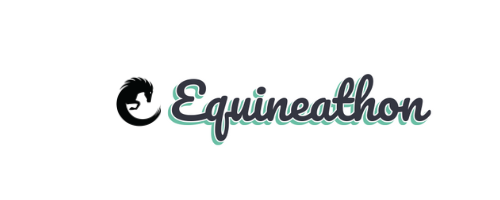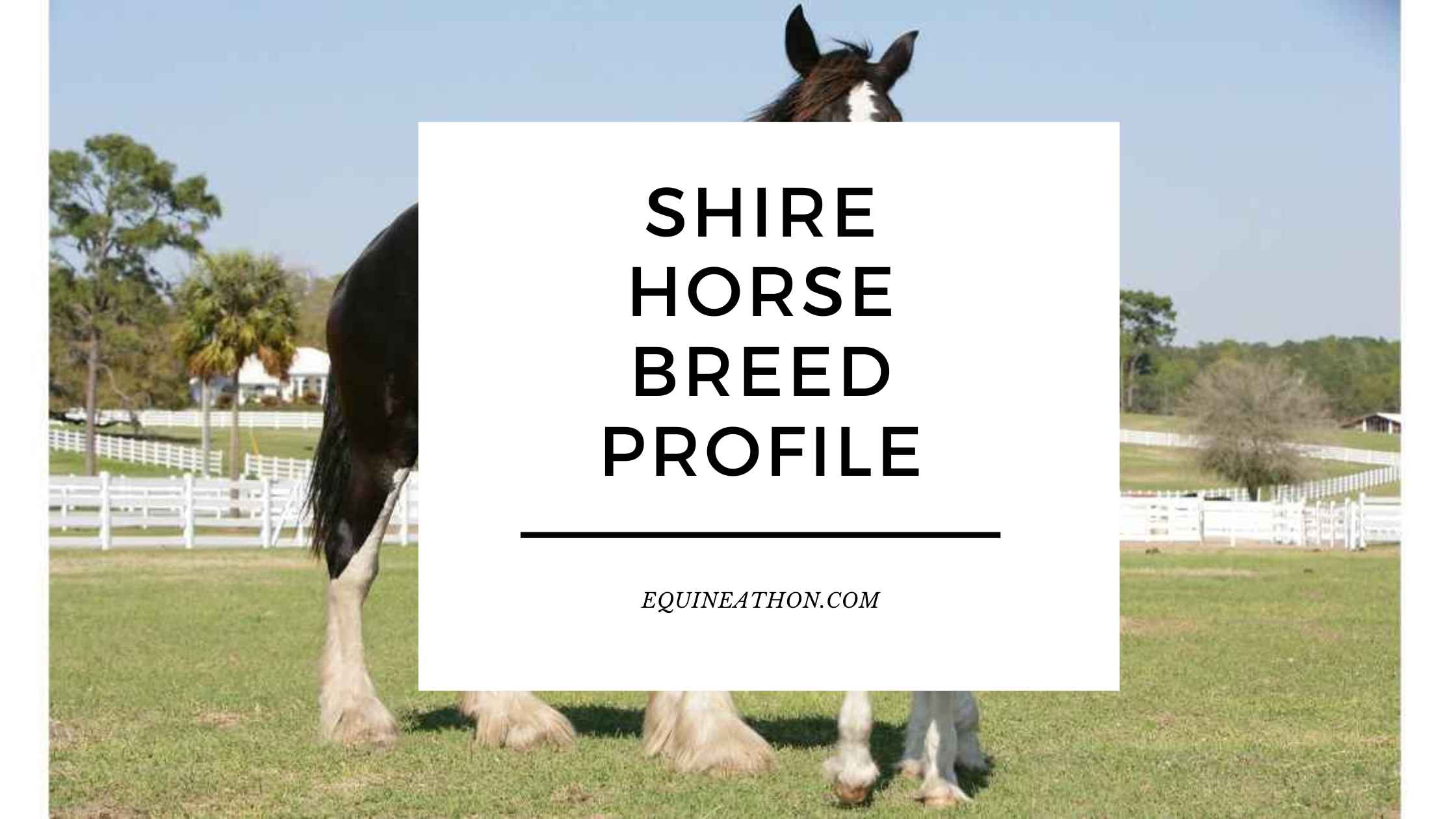Shire Horse Breed Profile – A Gentle Giant’s Tale
When I embarked on my journey into the world of equestrian breeds, I was particularly captivated by the majesty and history of the Shire horse. These gentle giants, with their remarkable stature and profound history, hold a unique place among horse breeds. But what truly defines the Shire horse breed?
The Shire horse is a British draft breed, renowned for its great size, strength, and amiable temperament. It stands as one of the world’s largest horse breeds, with roots tracing back to medieval England where it was a prime choice for knights heading into battle.
My exploration into the Shire horse breed’s characteristics began with their appearance. Shires are unmistakable with their massive build. Adults can stand anywhere from 17 to 19 hands tall, with some males even surpassing this. Their weight often ranges from 1,800 to 2,400 pounds, making them a true force to be reckoned with. They boast a broad head, large eyes, and long ears. Their coat can be black, bay, gray, or chestnut, often with white markings on their face, legs, and sometimes their body. The feathering, or long hair, on their lower legs adds to their distinctive appearance.
Beyond their physical attributes, it’s their temperament that endeared them to me. Despite their imposing size, Shires are often referred to as the “gentle giants” of the equine world. They exhibit an inherent patience and calm, making them ideal companions for both work and leisure. Their intelligence and willingness to work make them easy to train and reliable in various tasks.
Historically, after their role as warhorses diminished, Shires played a crucial role in England’s agricultural revolution. They pulled heavy wagons, plowed fields, and performed other labor-intensive tasks. Their strength and endurance made them the ideal workhorse during the pre-industrial era.
Today, the Shire horse’s versatility shines through in various avenues. Some are still employed in agriculture, but many have found roles in show arenas, parades, and even therapeutic settings. Their gentle nature makes them perfect for equine-assisted therapy programs, where they offer comfort and support to individuals.
From a health perspective, Shires, like all breeds, have certain susceptibilities. They can be prone to ailments like chronic progressive lymphedema and some hoof-related issues due to their heavy weight. Regular check-ups and proper care can mitigate most of these concerns.
In my journey of understanding the Shire horse breed, I’ve come to appreciate them as a symbol of resilience, adaptability, and unyielding gentleness. Whether you’re a potential owner, an enthusiast, or someone who’s merely curious, I hope this profile gives you a deeper insight into the wonderful world of Shire horses.

ALSO SEE: Bison Horse Trailer Problems
FAQs: Shire Horse Breed Profile
- What is the Shire horse known for?
The Shire horse is renowned for its great size, strength, and amiable temperament. - Where did the Shire horse originate?
The Shire horse originated in medieval England. - How tall can a Shire horse get?
Adult Shires can stand anywhere from 17 to 19 hands tall, with some males even surpassing this. - What is the typical weight range for Shire horses?
Their weight often ranges from 1,800 to 2,400 pounds. - What are common coat colors for Shire horses?
Their coat can be black, bay, gray, or chestnut. - What is feathering in relation to the Shire horse?
Feathering refers to the long hair on their lower legs. - How would you describe the temperament of a Shire horse?
Despite their imposing size, Shires are known as “gentle giants” due to their inherent patience and calm. - Were Shire horses used in battle?
Yes, in medieval England, Shires were a prime choice for knights heading into battle. - What role did Shire horses play in the agricultural revolution?
They were crucial in pulling heavy wagons, plowing fields, and performing other labor-intensive tasks. - Are Shire horses versatile?
Yes, today they are employed in various roles from agriculture to show arenas, parades, and therapeutic settings. - Do Shire horses have any health susceptibilities?
They can be prone to ailments like chronic progressive lymphedema and some hoof-related issues due to their heavy weight. - Are Shire horses easy to train?
Yes, their intelligence and willingness to work make them easy to train and reliable in various tasks. - What type of facial markings can Shire horses have?
They often have white markings on their face. - What are the distinctive physical features of Shire horses?
Their broad head, large eyes, long ears, and feathering on the legs are distinctive features. - Why are Shire horses called “gentle giants”?
Despite their large size, they exhibit an inherent patience and calm, making them gentle in nature. - What roles do Shire horses play today?
Many are used in show arenas, parades, therapeutic settings, and some in agriculture. - How do Shire horses fare in equine-assisted therapy programs?
Their gentle nature makes them perfect for such programs, offering comfort and support. - Are there any specific hoof-related issues Shire horses can face?
Yes, due to their heavy weight, they can sometimes face hoof-related health concerns. - Were Shire horses always used for agriculture?
No, they initially served as warhorses before their role shifted to agriculture. - What kind of eyes do Shire horses have?
Shire horses have large eyes. - How often should Shire horses undergo health check-ups?
Regular check-ups are essential to monitor and address potential health concerns. - Is the Shire one of the world’s largest horse breeds?
Yes, the Shire stands as one of the world’s largest horse breeds. - Can Shire horses participate in competitions?
Yes, many participate in competitions that highlight their strength and agility. - What type of ear structure do Shire horses have?
They have long ears. - Do Shire horses have a strong work ethic?
Yes, historically and presently, their willingness to work is notable. - How should one care for a Shire horse’s health?
Regular check-ups, proper nutrition, and exercise are crucial, along with monitoring for breed-specific ailments. - How do Shire horses bond with humans?
Their calm demeanor and gentle nature allow them to form strong bonds with humans. - Where can one typically see Shire horses today?
Apart from farms, they are often seen in show arenas, parades, and therapy programs. - Are Shire horses suitable for beginners?
Given their gentle nature, many beginners find them to be suitable, but it’s essential to have proper guidance due to their size. - How have Shire horses adapted over the years?
From warhorses to agricultural work and now varied roles, they’ve shown remarkable adaptability. - Are Shire horses good for riding?
Yes, many people ride Shire horses, but it’s essential to have appropriate tack given their size. - Do Shire horses need special equipment due to their size?
Given their stature, they often require larger tack and equipment. - Are Shire horses high maintenance?
While they have specific needs due to their size, with proper care, they aren’t necessarily high maintenance. - What makes the Shire horse unique among horse breeds?
Their combination of size, strength, history, and gentle temperament makes them unique. - Do Shire horses have a long lifespan?
With proper care, they have a lifespan comparable to other horse breeds. - How did Shire horses evolve alongside humans?
They served in wars, aided in agriculture, and now provide companionship, showcasing their evolution with human society. - Is the Shire horse’s size a disadvantage in any way?
While their size offers many advantages, it can also lead to certain health concerns, especially related to their hooves and weight. - Do Shire horses get along with other horse breeds?
Generally, they are amiable and can get along with other breeds, though individual temperaments may vary. - What kind of work were Shire horses used for in the pre-industrial era?
They were used for pulling heavy wagons, plowing fields, and other labor-intensive tasks. - What is the significance of white markings on a Shire horse’s body?
White markings are a common coat pattern, often seen on their face, legs, and sometimes their body.

